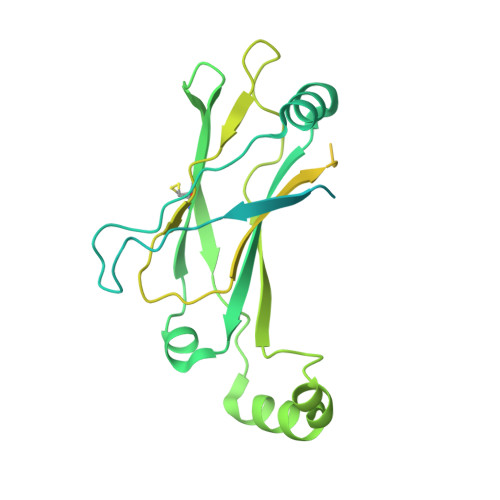Cryo-electron microscopy structure of the lipid droplet-formation protein seipin.
Sui, X., Arlt, H., Brock, K.P., Lai, Z.W., DiMaio, F., Marks, D.S., Liao, M., Farese Jr., R.V., Walther, T.C.(2018) J Cell Biol 217: 4080-4091
- PubMed: 30327422
- DOI: https://doi.org/10.1083/jcb.201809067
- Primary Citation of Related Structures:
6MLU - PubMed Abstract:
Metabolic energy is stored in cells primarily as triacylglycerols in lipid droplets (LDs), and LD dysregulation leads to metabolic diseases. The formation of monolayer-bound LDs from the endoplasmic reticulum (ER) bilayer is poorly understood, but the ER protein seipin is essential to this process. In this study, we report a cryo-electron microscopy structure and functional characterization of Drosophila melanogaster seipin. The structure reveals a ring-shaped dodecamer with the luminal domain of each monomer resolved at ∼4.0 Å. Each luminal domain monomer exhibits two distinctive features: a hydrophobic helix (HH) positioned toward the ER bilayer and a β-sandwich domain with structural similarity to lipid-binding proteins. This structure and our functional testing in cells suggest a model in which seipin oligomers initially detect forming LDs in the ER via HHs and subsequently act as membrane anchors to enable lipid transfer and LD growth.
- Department of Cell Biology, Harvard Medical School, Boston, MA.
Organizational Affiliation:
















